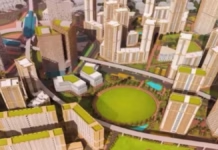Limited Effects of Steel Safeguard Duty
The potential implementation of safeguard duties on steel imports into India may not significantly impact the domestic steel industry, according to recent findings by HDFC Securities. While the government’s proposed action aims to curb the inflow of foreign steel, the measure’s overall effect appears to be constrained due to the Free Trade Agreements (FTAs) India holds with major steel-exporting countries.
The report suggests that approximately 62% of India’s steel imports come from nations with which India has bilateral FTAs, including Japan, South Korea, and several ASEAN countries. These agreements allow these nations to export steel to India duty-free, meaning any new safeguard tariffs will have a minimal impact on these shipments. As a result, the safeguard duty would only affect a small portion of India’s steel imports, primarily from countries like China that are not covered by FTAs and have been accused of dumping steel at artificially low prices. China’s aggressive pricing strategy has been a significant concern for India’s steel manufacturers, as it has led to a decline in their market share and profitability. The safeguard duty, if imposed, is expected to increase the cost of Chinese steel, thus making domestically-produced steel more competitive. In the long term, this could help restore the balance in favour of Indian manufacturers, especially those struggling to compete with cheaper imports.
However, industry experts caution that while the safeguard duty might provide short-term relief, it is not a panacea for the structural challenges faced by India’s steel sector. The safeguard measure does not address the deeper issues of cost competitiveness and operational efficiency that continue to hinder domestic producers. India’s steel sector has evolved significantly since the country’s independence, expanding from a modest 1 million metric tonnes (MT) of crude steel production in 1947 to an impressive 180 million MT capacity by FY24. Yet, India’s per capita steel consumption remains low, at 93kg in 2023, far below the global average of 220kg. The disparity in rural and national steel consumption, with rural consumption at just 22kg, underscores the untapped growth potential in India’s steel market. With the government’s push for rural infrastructure development and increasing urbanisation, there is considerable scope for growth in the sector. While the safeguard duty may protect the domestic market from foreign competition, it is the government’s long-term strategic focus on infrastructure that will drive meaningful growth in the steel industry.







